Great success of small tanks
In the mid-30s, guns were added and Tanks. Czechoslovakia managed to occupy second place in the world in terms of export deliveries of armored vehicles in the interwar period, having come close to Britain. The first and at the same time the most popular example of Czechoslovakian export of armored weapons was the Praga AH-IV wedge.
English based
The first tanks of the Czechoslovak army were seven French Renault FT, which by the middle of the 20-s were significantly outdated. This was especially true of their mobility, and just as she began to play an increasingly important role on the battlefield. The Czechoslovak military did not reinvent the wheel and turned to foreign experts. I didn’t have to go far: in the neighboring Germany, which could not build and develop tanks under the terms of the Versailles Treaty since 1920, a man who offered his services was quickly found. They became Josef Vollmer, who developed a wheeled-tracked platform.
Since 1923, the KH-50 wheeled / tracked tank development program has been launched in Czechoslovakia. It lasted until the 1929 of the year, but it did not end with anything good. Developed with the participation of Volmer tank proved to be unsuccessful, further prototypes in this area has not progressed.
One of the tanket shoes CL-P, 1930 year. It was from these machines, built under license, began full tank construction in Czechoslovakia
The “culprits” of the future triumph of the Czechoslovak tank industry were the British, or more precisely, the officials of the British military ministry. In 1929, they staged a natural pogrom for the tank forces of their country. The supply of tanks to the troops was sharply reduced, from which one of their main manufacturers, Vickers-Armstrongs Limited, was severely damaged.
The priorities of the company shifted towards export shipments. The main exports were two cars - a light tank Vickers Mk.E and wedge Carden-Loyd Mk.VI. The British military, who “let go” of the Vickers-Armstrongs on free bread, hardly understood what they had done. Selling these machines abroad, British tank builders shared their advanced technologies with the world. Direct "descendants" of English export cars appeared in the USA, USSR, Germany, Poland, France, Italy, Sweden and Japan.
Škoda MU-2 wedge under test. Despite the very progressive design, she did not suit the Czechoslovak military
It turned out in this list and Czechoslovakia. In 1929, the company ČKD acquired the license for wedge shoes Carden-Loyd Mk.VI. The following year, one sample arrived in Czechoslovakia. According to a study by Yuri Tinter, two wedge cords were built on ČKD, which received the designation CL-P (Carden-Loyd-Praga). The car received such a designation because the structure of ČKD included the company Praga, which produced cars and trucks. CL-P were the first ČKD tanks built by the company themselves. The contract with the British meant that ČKD paid pounds sterling to the copyright holder 75 for each wedge heel. Not surprisingly, the mass wedge CL-P did not.
Škoda MU-4, also left behind in the competition
However, the CL-P’s fate was affected by the Czechoslovak military’s verdict much more than the money issue. In the fall of 1930, the tankety took part in the maneuvers that took place in Milovice. The military did not like the English wedge; its design required rework. A program was launched to create its own tankette, and on a competitive basis.
The first company to deal with the task was Škoda, which presented the wedge MU-1931 in 2. Little remains of the original Carden-Loyd tankety. MU-2 looked like a full-fledged tank: instead of chopping it was installed single tower. True, the wheelhouse for the driver significantly blocked the shelling sector to the right of the tower. MU-2 tests failed: armor thickness up to 5,5 mm was clearly not enough, and one machine gun didn’t work as a weapon for the Czechoslovak military. The engine installed on it turned out to be weak for the car.
The second attempt by Škoda was an improved wedge, designated MU-4. Characteristics of the car looked much better. Her armor was increased to 10 mm, the armament was increased to two machine guns ZB vz.26, the machine received an 40-strong engine. MU-4 was introduced in the 1932 year, and its fine-tuning continued until the 1934 year. Time was lost.
The prototype PI tankettes are factory tested. The inscription MNO means "ministerstvo národní obrany", that is, "the Ministry of Defense"
Unlike the competitor, on ČKD they chose to take the already existing cars and redo them. The layout of the Carden-Loyd Mk.VI was not touched here, the military, it is the engine compartment, was seriously reworked. The close construction with caps on ČKD was abandoned, having developed a body without any pockets along the sides. The driver's seat was moved to the right, a viewing device was installed in front, which was reclined in the stowed position. The commander received a machine gun with a relatively wide sector of fire. In total, there were two ZB vz.26 machine guns on the tank: one was used by the commander, the second was located to the right of the driver.
Large hatches appeared on the roof of the fighting compartment, and the ventilation system was also more elaborate. The motor was changed to a Praga AHN engine with 30,7 horsepower. The combat weight of the tankette, which received the designation PI, grew to 2,4 tons, but the more powerful engine allowed maintaining good mobility. At the same time, the protection of the car turned out to be quite decent: the thickness of the frontal armor reached 12 mm, which reliably protected the wedge against the bullets of the rifle caliber.
In terms of facilities for the crew Tč vz. 33 was a big step forward compared to the original wedgies Carden-Loyd Mk.VI
Converted wedges received the numbers NIX 223, NIX 224 and NIX 225. Also, a fourth wedge was built on ČKD, which remained the property of the plant. PI tests began in the 1932 year, following their results various changes were made to the design.
October 17 1933 of the year in Milovits went prototypes, and soon it was decided to adopt tankettes in service with the Czechoslovak army. Officially, the car received the designation Tč vz. 33 (model 1933 wedge of the year). Prototypes received serial numbers 13.359 – 13.361. Also, a contract was signed with ČKD for the production of 70 tank shoes. Tč vz. 33 was the first model of Czechoslovak armored vehicles, launched in mass production. Shipments began in November 1933 of the year and ended on October 10 of the year 1934. Serial machines had 13.420 – 13.489 numbers.
Tč vz. 33 maneuvers in Milovice. By the end of 30, these wedges were used mainly as training machines.
Tč vz. 33 was the first and last wedge of the Czechoslovak army. It found its place in the armament system of the Czechoslovak army, but on the whole it was viewed more like a training machine. 23 on April 1934 of the year ČKD handed over the first six light tanks P-II, later adopted for service as LT vz.34. This machine exceeded Tč vz in all respects. 33. The Czechoslovak army made a bid for light tanks with cannon armament.
Export trifle
The views of the Czechoslovak military were not shared in all countries. Miniature armored vehicles were actively "bred" in many states, considering that small and cheap machine-gun tanks are still good in terms of infantry support. Germany, Italy, Japan, USA, Poland - in these countries tankettes, as well as small and light machine-gun tanks formed the basis of armored forces.
The Iranian delegation and prototypes of tanks for Iran. Machines do not yet have weapons, and the role of towers perform mockups.
In this state of affairs, it is not surprising that wedges and small machine-gun tanks were purchased by many states. One of them was Persia (from 22 in March 1935, replacing the official name with Iran). At the beginning of 1935, a procurement commission headed by General Ismail Khan set off to Europe, with the task of acquiring 3-tonket shoes. Negotiations were held in Paris with representatives of Czechoslovak firms. Iranians are interested in ČKD proposals, which was facilitated by the company's agent Emil Oplatka. In May, the Iranian delegation arrived in Prague. After inspecting the ČKD 15 products in May, the impressed Iranians entered into an agreement to purchase TNH light tanks 26.
However, the Iranian military also did not refuse tankettes: the 30 AH-IV tankettes were purchased under the same contract. Although both armored vehicles did not even exist in the metal, the demonstration inspired the procurement commission that everything would be all right. They did not forget about the gift: the company ČKD presented the Iranian delegation with a prototype PI tankettes. So the Czechs simply got rid of the unnecessary machine.
The same wedge with installed weapons and a full tower
If in the case of the Praga TNH it was a question of upgrading a not very successful light tank P-II-a, then the tanket for Iran was developed from scratch. After all, even in a modernized form of PI by the time looked like an anachronism. At ČKD, work began to boil, and a completely different car appeared before the Iranian commission arrived in September 1935. The combat mass of the AH-IV has grown to 3,5 tons, the car has become longer by half a meter, and the design of the wedge has become more reminiscent of light tanks ČKD. The commander received a full-fledged turret with a circular sector of shelling, while the course machine gun to the right of the driver was preserved. On the test machine, however, at first there was no weapons.
The design of the undercarriage, including the suspension developed by Alexei Surin, was taken from the Praga TNH wedge. On the prototype used the same engine as the PI, but more advanced transmission and chassis allowed the car to accelerate to 40 km / h.
Serial AH-IV. The configuration of the tower has changed somewhat, there are differences in the hull
The Iranian military was impressed by the demonstration. At the time of the creation of the AH-IV was the best wedge, on combat capabilities coming close to light tanks. No wonder that the order was expanded to 50 machines. The price of one wedge was 1 629 pounds, which was cheaper than the German Pz.Kpfw.I Ausf.B. This amount did not include the cost of sights and machine guns, their Iranians ordered from the company Československá zbrojovka (ZB) in Brno. According to the contract, the deadline for deliveries was determined by the end of October 1936.
The same car on top. In this perspective, the AH-IV is more like not a wedge, but a small tank.
Unlike TNH, the Praga AH-IV issue was organized not in Prague, but at the plant in Slany, north-west of the capital of Czechoslovakia. The main problem with the assembly was that the level of production mechanization was low here. This could not affect the speed of execution of the contract. Another serious problem was the marriage of the company POLDI Hütte, which produced armor plates. The armor was fragile.
Deliveries were delayed, from which, above all, the Iranian Acceptance Commission, which was gambling in Prague at that time, won. In a sense, the compensation for the Iranians was the installation in the serial AH-IV of the more powerful Praga RH engines. Engine volume 3,47 liters and horsepower 55 accelerated wedge to 44 km / h. In the end, the contract was fulfilled almost on time: by 3 in November 1936, Slani had left 48 tankettes. The remaining 2 machines, as well as the prototype, went to Iran as early as 1937.
Iranian selection committee on the background of Praga AH-IV, 1937 year. Judging by the faces, the Iranian military were satisfied
Czechoslovak tanketki liked the Iranian military. In the 1938 year, negotiations began on the supply of more 300 machines, but after the occupation of the Czech Republic by Germany, they began to come to a standstill. The maximum that the Iranians succeeded in was acquiring Telefunken radio stations, which were installed on tankettes. However, neither the walkie-talkies, nor the tankettes themselves helped Shah Pahlavi. When the Soviet-British operation to occupy Iran was carried out in August 1941, the tanks were inactive. By the way, already after the war, in 1947, Iran tried to purchase spare parts for armored vehicles on ČKD, but to no avail.
AH-IV-R wedge prototype on trial
The Iranian success of the Czechoslovak tank shoes, as in the case of the Praga THN tank, was also noticed by other countries. In January, the Romanian Purchasing Commission arrived in Czechoslovakia after an unsuccessful European tour in 1936. Initially, it was about procurement, similar to Iran. The Romanians wanted to buy light tanks TNH (at a price of CZK 375 000 apiece), as well as AH-IV tankettes (CZK 307 000). Later, in April 1936, a contract was signed for the supply of 100 Praga P-II-aJ and 35 AH-IV. The light tank, however, quickly disappeared from the contract, since it lost the Škoda Š-II competition, adopted by the Czechoslovak army under the name LT vz.35.
Serial AH-IV-R, aka R-1
6 August 1936, the contract was signed for the supply of X-NUMX improved tanning plates, which received the factory designation AH-IV-R. In Romania, these machines received the designation R-35. The price increased slightly - up to CZK 1 320. These machines were equipped with a more advanced Praga RHP engine, the Praga-Wilson planetary gearbox, and the combat mass increased to 585 tons. The maximum speed increased to 3,9 km / h, the power reserve increased. The installation of the machine gun in the turret has changed a bit, and a special “collar” has appeared below, covering the turret shoulder strap from bullets and fragments.
Fighting squad R-1. It is impossible to say that you can dance inside, but it is quite spacious and comfortable for tankettes.
The first 10 R-1 left the factory in Slany 27 September 1937 of the year. While undergoing finishing tests, the remaining tankettes were ready. Despite some delay, the Romanian military as a whole was satisfied with the machine, which was supposed to be used as a reconnaissance tank. In May 1938, negotiations began on licensed production of R-1 in Romania. 22 February 1939 was signed an agreement to release the R-1 at the Malaxa plant in Resita. This automobile plant already had experience assembling conveyors Renault UE.
Malaxa was supposed to assemble the 382 wedge heels, but in reality there was only one machine built that received the serial number Sr.301.
Final combat career tank number XXUMX. Somewhere near Odessa, September 31
R-1 actively used by the Romanian army in the war against the USSR. In particular, they were used in the battles for Odessa. Even in the conditions of an acute shortage of tanks and anti-tank weapons, the Red Army in this sector was heavily affected by the Romanian R-1. Irrecoverable losses amounted to 6 machines, of which several were captured by the Red Army fighters. Judging by the fact that almost all the remaining wedges required repair, the overall picture of the losses looked even more sad.
By the summer of 1942, all the surviving tankettes had returned to service, of which 14 had been lost by December. Morally obsolete R-1 brought into reserve. By 1 September 1943, 13 of them were in a cavalry school in Sibiu. True, from this number only 5 was on the move. In November, the idea arose of making them self-propelled units with 45-mm cannons, and put the towers on DOTs. The Romanians refused this idea, since the "forty-five" was no longer an effective means of fighting tanks. However, R-1 had a chance to make war again. After Romania went over to the side of the anti-Hitler coalition, tankettes were again engaged. Ironically, one of the latest cases of their use was fighting in the Czech Republic.
Wand for Sweden
The next customers after Romanians who became interested in AH-IV tankettes were extremely unexpected. They became the Swedes. So it was extremely difficult to blame the backwardness of the Swedish tank industry in the middle of the 30-s. The Landsverk design bureau, under the leadership of Otto Merker, has developed several advanced tanks. Landsverk L-60 actively advanced for export. The Swedes also had a lighter tank, the L-120, which was supposed to be used as a scout. By the way, it was also offered by the Swedes in foreign markets.
Prototype AH-IV-Sv, Autumn 1937 of the Year
At the same time, however, the Swedish army at that time was in a difficult situation. In addition to the outdated 10 Strv m / 21 and 3 Strv m / 31, there was nothing to boast about. Meanwhile, by the middle of the 30-s, Sweden began to feel increasing tension in Europe. Tight economic ties with Germany did not guarantee security from this direction, but even more Swedes were afraid of the USSR. 11 July 1936 was the Swedish parliament that allocated a million crowns for the modernization of the 130 army.
Of the allocated money, 6 million Swedish kronas were earmarked for the purchase of 50 tanks. It was assumed that the machines will be of two types: machine gun tankettes of 4 tons of battle mass, and also tanks of 7 tons of combat masses, armed with guns. The domestic tanks offered by Landsverk did not fully meet the requirements of the Swedish army, and besides, they turned out to be expensive. The military looked more attentively at foreign equipment. It could even happen that instead of Landsverk L-60, the Swedes, following the example of the Finns, could acquire Vickers Mk.E. But the English tank was quickly removed from the list, as the L-60 was clearly better.
However, at the end of 1936, a procurement commission was organized. It included Captain Eric Gillner from KAAD, Lieutenant Colonel Anders Bergqvist, representing the infantry, and Major Jesta Bratt from the Gotaland Life Guards Tank Battalion. In January-February, 1937, these officers visited France, Poland and Germany. In France, they were offered Renault ACG-1 (AMC-35), Renault YR, as well as AMR 35ZT, but these cars did not suit the Swedes. In Poland, the commission examined the 7TP light tank and the TK-S tan-toe, they also did not inspire enthusiasm. Finally, in Germany, the Swedish military was shown Pz.Kpfw.I Ausf.A. He did not arrange the commission either.
Layout AH-IV-Sv. Inside is quite spacious, especially for a car of this class.
Finally, in January 1937, negotiations began between ČKD and the director of the company Ackumulator AB Jungner from Oskarshamn. Both companies were connected with each other: batteries manufactured in Sweden (they are NiFe battery) were used by the Czech company. Jungner decided to contribute to the rearmament program of the Swedish army and act as an intermediary between the ČKD and the Swedish military.
Such activity of the battery giant is not surprising. Ackumulator AB Jungner also included a shipyard in Oskarshamn, that is, there were production areas that allowed tanks to cost. We should not lose sight of the fact that the newly formed commission, in addition to Gillner, included captain Helg Jung, whose brother worked in the Jungner¸ CB, as well as the capital of Fale Burman, also related to the company.
Serial sample AH-IV-Sv, aka Strv m / 37. For its time, it was the best wedge, comparable in performance with other tanks
2 March 1937 between Ackumulator AB Jungner and ČKD concluded an agreement on the purchase of tanks for a total amount of 80 million Czechoslovak crowns. The day before, Gillner and Burman headed to Czechoslovakia. They participated in the testing of tanks, which took place in the Giant Mountains (Krkonoše). In addition to the AH-IV, the Swedish military had the opportunity to test and TNH, which made a big impression on the bottom. 9 March at ČKD they were shown various tanks and projects. Among them was the AH-IV-C, a gun variant of the wedge.
On his return to Sweden, Gilner visited the Czechoslovak military attache. Gilner's opinion was unequivocal - it was necessary to buy Czechoslovak tankettes. They fit perfectly into the concept adopted by the Swedish army.
At the end of March, a meeting was held at which the Swedish military leadership once again discussed the question of which tanks to buy. L-120, which was not tested at its best, turned out to be rejected. In addition to AH-IV, there are no other candidates left. However, the Swedes insisted that the weapons and armor should be Swedish, and this was only the beginning of alterations. 2 June 1937 of the Year Surin introduced an enlarged version of the wedge, which received the internal designation AH-IV-D. The car received a more powerful Volvo engine. 8 June was followed by another visit by the Swedish Commission. In addition to Gillner and Bratt, Lieutenant Colonel Ehrensverd arrived in Prague from the General Staff. Commissions showed a prototype R-1. During the tests, the tankette died down the engine, but this did not affect the decision of the commission. Even Bratt, considered a Landsverk man, was pleased.
The AH-IV-Sv was slightly larger and significantly more powerful than the other tankettes of this family.
The final version of the machine received the designation first AH-IV-S, and then AH-IV-Sv. It was decided to purchase 48 wedges worth 37 500 Swedish Kronor apiece, later this number dropped to 46, and the price rose to 42 240 kroner. Also on 75 000 crowns were purchased parts. The first prototype was ready in September, and in November it was checked by the Swedish commission. Very pleased with the test results, the Swedes signed a procurement protocol.
The Swedes dismantled the prototype and used them as patterns for the preparation of serial wedge design drawings. The Czechoslovak industry produced only a part of the machine, the production of the remaining units was carried out in Sweden. The armor for tankettes was supplied by a steel factory from Avesta, and the assembly was carried out at the shipyard in Oskarshamn. The general management of the production was carried out by ČKD engineer Harry Yoss and 20 employees of the Czechoslovak company.
At the beginning of World War II, the Strv m / 37 were the most massive tanks of the Swedish army
The first tankettes were ready in September 1938. The Swedish version turned out to be 20 cm longer and cm wider on 10, and its mass grew to 4680 kg. The thickness of the armor has grown to 15 mm. The Volvo FC engine from the LV93 – 95 truck was installed on the platform sole. The straight-line “six” with a volume of almost 4,4 liters developed the power of the 90 hp, thanks to which the AH-IV-Sv accelerated to 60 km / h. From the very beginning, the car received a radio station. More sophisticated were viewing devices, and the tower received a commander's cupola. Finally, all the armor armament, consisting of a pair of ksp 8 mm m / 36 strv machine guns, was in the turret. At that time, it was the best wedge in the world, according to its characteristics, quite comparable with some light tanks.
Reliability and very good characteristics for its class ensured Strv m / 37 a long career in the Swedish army
The AH-IV-Sv contract was fully completed in February of the 1939 of the year, while the Swedes put the car into service as the Strv m / 37. Finishing work continued in March, when they came from the Czech Republic news on the occupation of the country by Germany. Yoss decided to stay in Sweden.
As for the new tankettes, they got the 131 – 178 serial numbers. Initially, they entered the Gothaland Life Guards Infantry Regiment (Göta livgarde, I 2). Strv m / 37 turned out to be the most widespread type of Swedish tanks at the beginning of World War II.
The saturation of the tank battalion with tanks made it possible to conduct the first truly mass exercises. In the autumn of 1939, tanks were distributed between the infantry regiments I 9 (Skarabork) and I 10 (Strangnes). Like many Swedish tanks, Strv m / 37 turned out to be long-lived - they were written off only in 1953 year. 10 has survived to this day of such machines, half of them are in running condition.
Last tour
The end of the Second World War marked the beginning of the rebirth of the export supplies of the Czechoslovak arms industry. In the case of tanks, the base steel work on machines either German or Soviet design. The development of a prospective TVP tank and a number of light tank projects began for our own army. Gradually, however, the work came down to the release of licensed samples of Soviet origin, including T-34 – 85. However, the first commercial success of ČKD after the war was directly related to the pre-war history Czechoslovak tank building.
The modified R-1 prototype on trial, September 1949. By car was tested motor Tatra air cooling
In June, an ČKD agent, engineer Balthazar Germarkian, began working in the Middle East in the Middle East, whose task was to promote Czechoslovak weapons. He received money for a reason: based in Cairo, the engineer was able to crank up several large deals. In 1947, he visited Ethiopia, where he was able to meet with Emperor Haile Selassie I. The monarch’s interest was caused, oddly enough, by the wedge, which looked outdated at the beginning of World War II. This choice was explained simply: there were no plans for large tank battles in Ethiopia, but for the counterguerrilla system, the tankette was enough.
The emperor put forward the following requirements: the car had to have a fighting mass of 3,5 – 4,5 tons, an air-cooled engine, and also work well in a hot climate with a lot of dust. In the course of further negotiations that took place in the spring of 1948 of the year, Ethiopia requested 20 tankettes. Czechoslovak military with reservations, but still approved the deal. In the case of TNH light tanks, the Czechoslovak military blocked the deal, which, by the way, was used by the Americans.
In general, AV-IV-Hb differed little from R-1, the main differences were inside
The final point in the negotiations was the signing of the 24 June 1948 agreement in Addis Ababa for the supply of 20 AH-IV at the price of 26 750 dollars apiece. On the part of ČKD, the agreement was signed by Germarkyan. It turned out that the tankette was not very complicated: the designer of ČKD Surin took the R-1 prototype as a basis and modified it a bit. On the machine was installed diesel engine Tatra 114 air cooling. With a volume of almost 5 liters, he developed 65 horsepower. The car, heavy to 3930 kg, developed an acceptable 43 km / h speed. The modified wedge received the designation AV-IV-Hb.
One of the Ethiopian tanket shoes, 80-e. The machine was still in service
The first 5 tank shoes for Ethiopia were ready for January 1950. After testing in the mountains, the tanks went to the customer. During May 1950, crew training was organized. In 1951, Ethiopia ordered parts, but then politics intervened again. Ethiopia’s participation in the Korean war on the side of the UN contingent blocked further contacts between that country and socialist Czechoslovakia.
It can be said that Czechoslovak Communists became the grave-diggers of Czechoslovak tank building from the point of view of developing their own designs. The failure of a number of countries to export supplies led to the fact that at the beginning of the 50-ies Czechoslovak tank production was reduced to the licensed construction of the Soviet T-34 – 85 and SU-100, and later it moved to the Slovak Martin. This is the case when politics and common sense were incompatible.
As for the Ethiopian tanket shoes, they continued to serve at least until the 80-s.
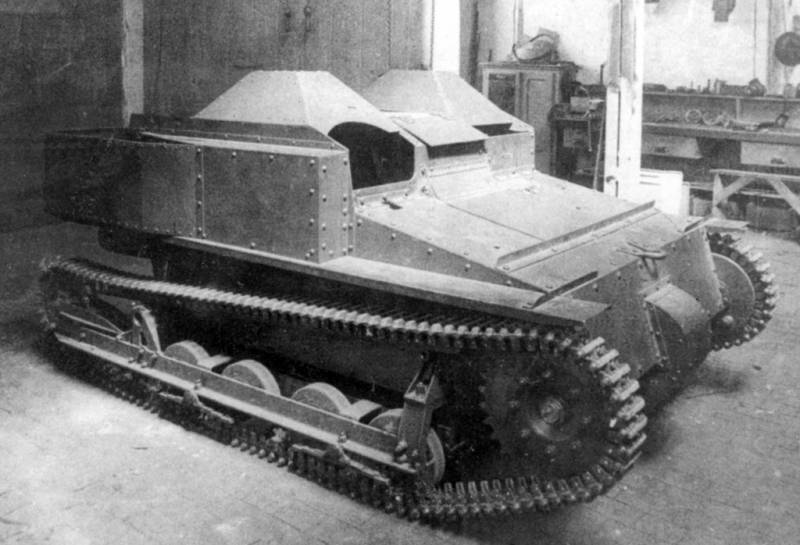
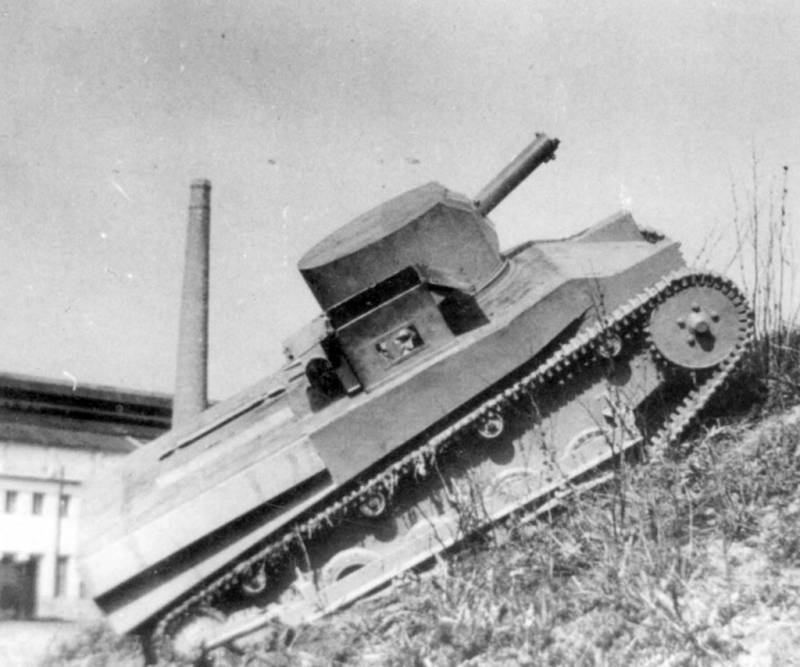
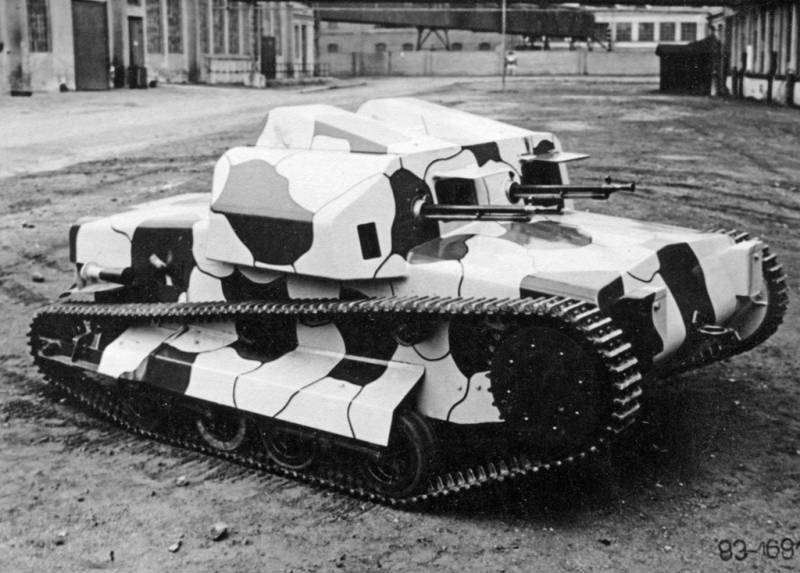
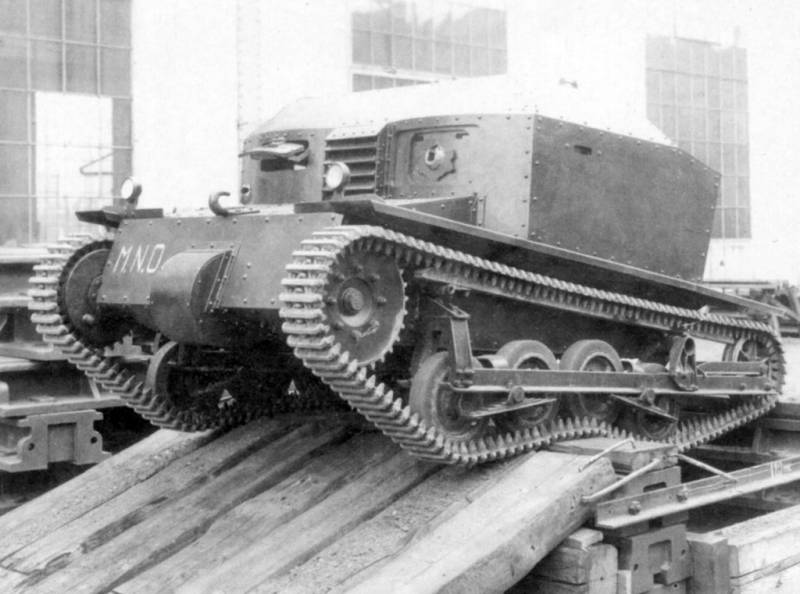
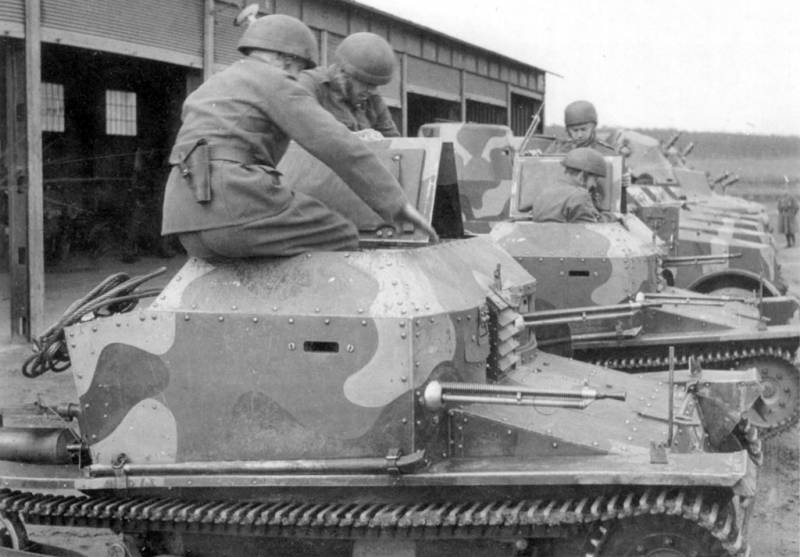
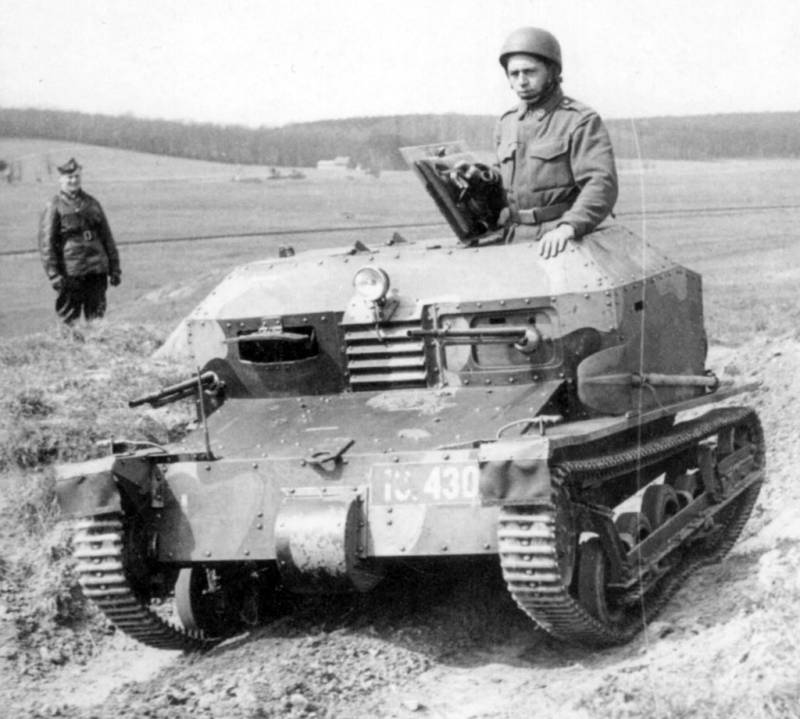
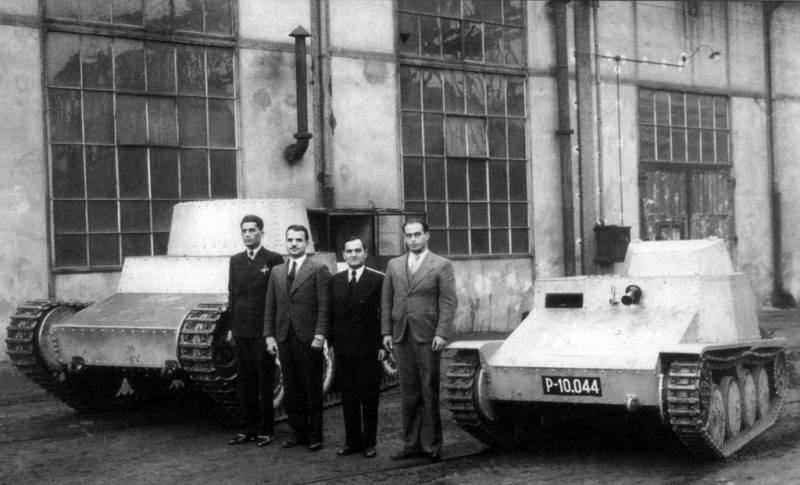
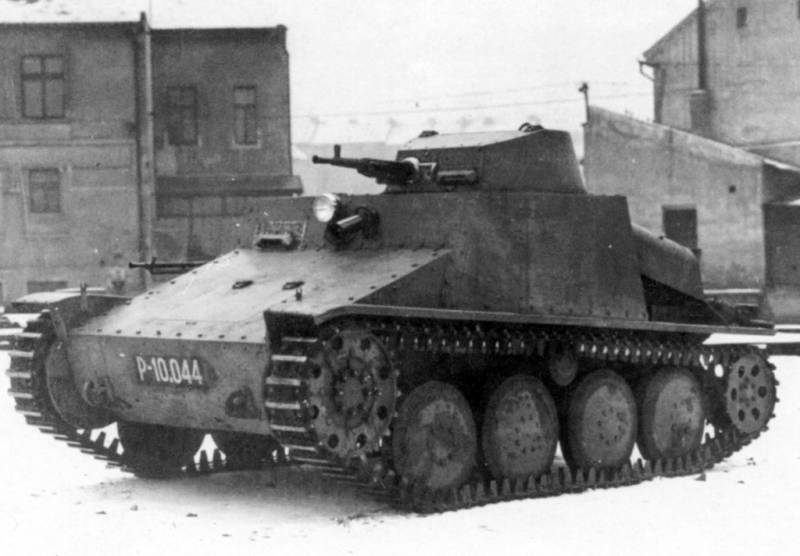
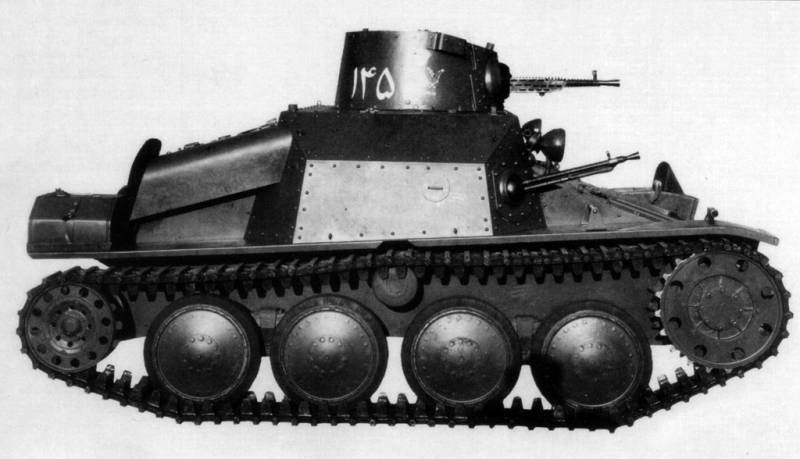
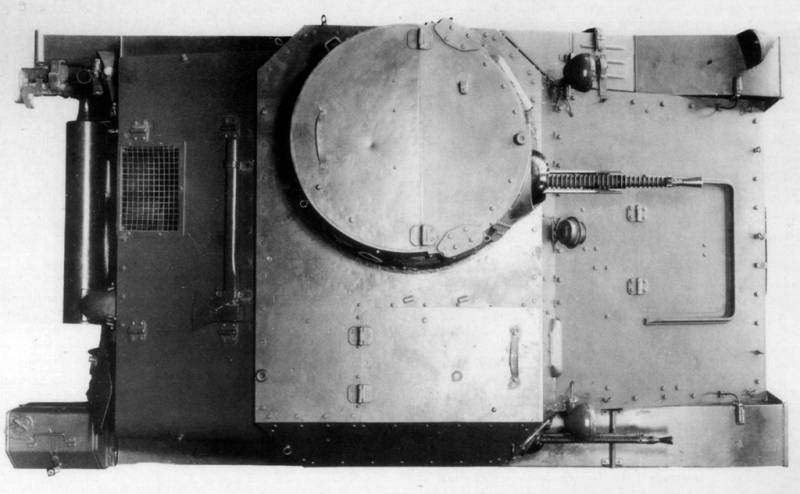
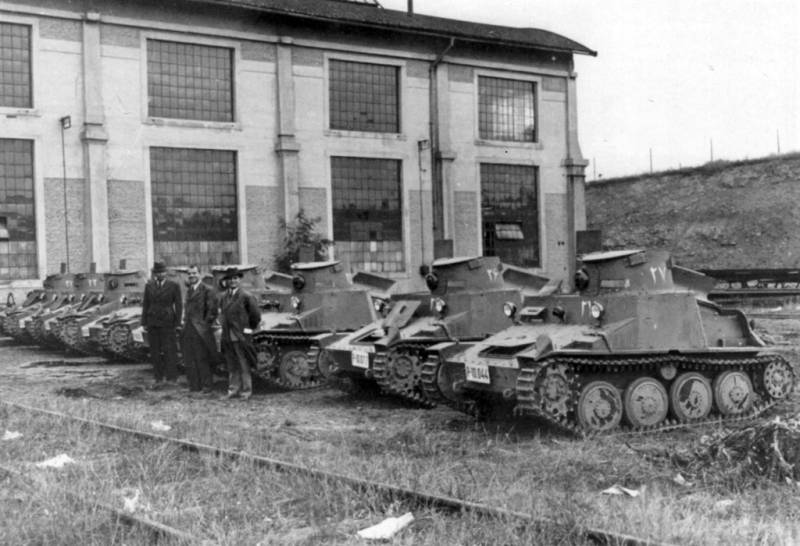
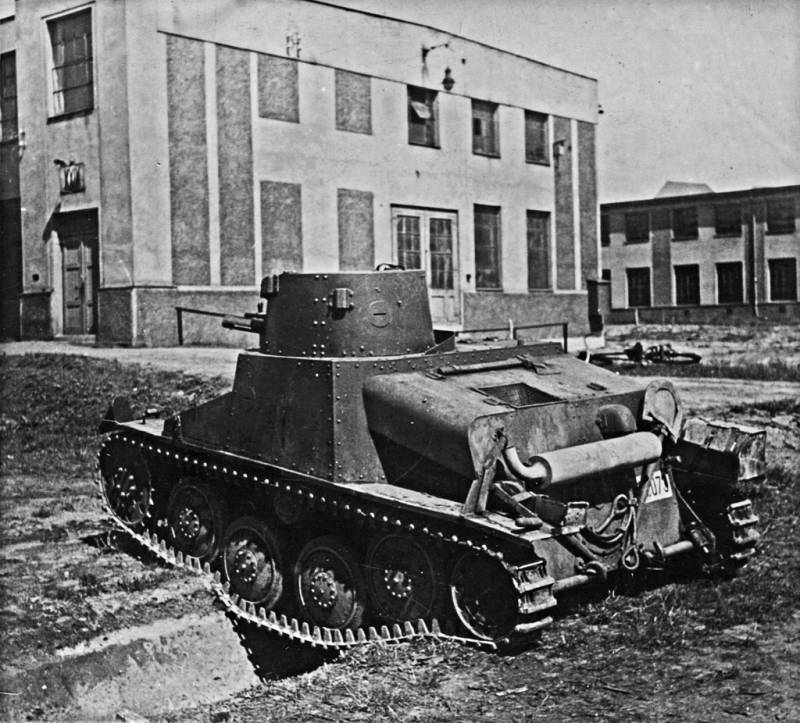
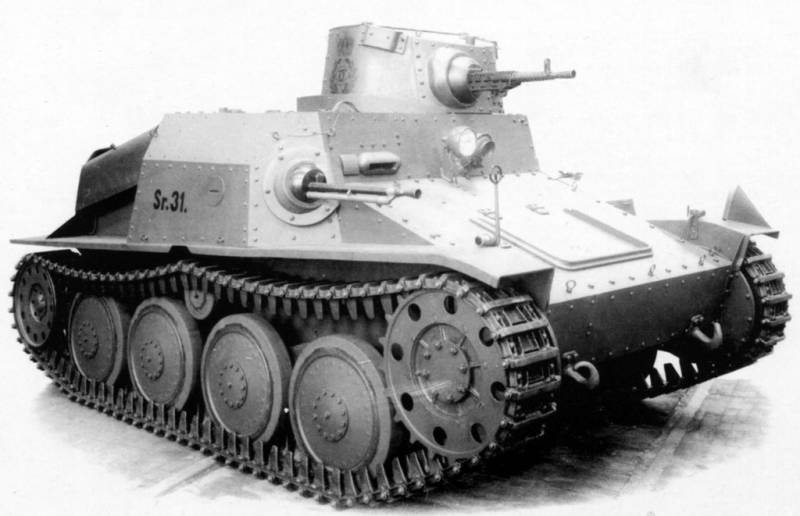
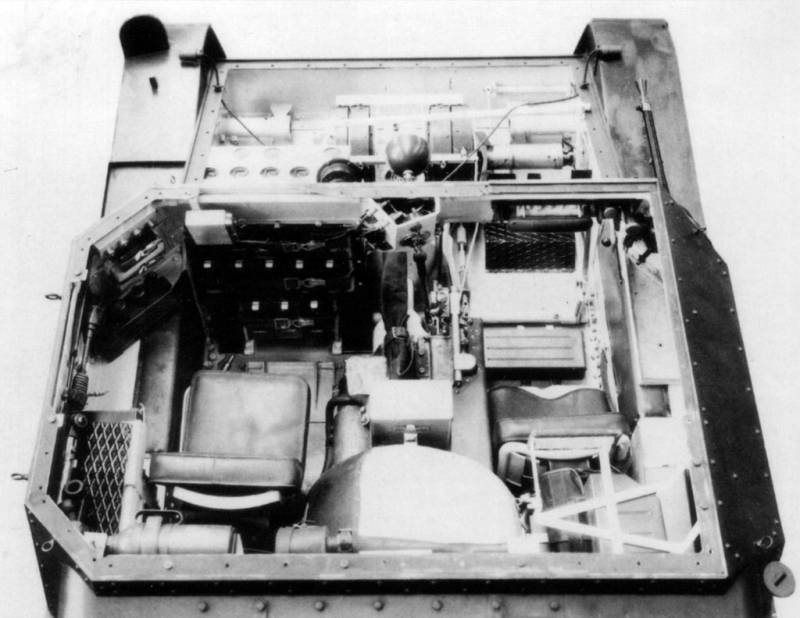
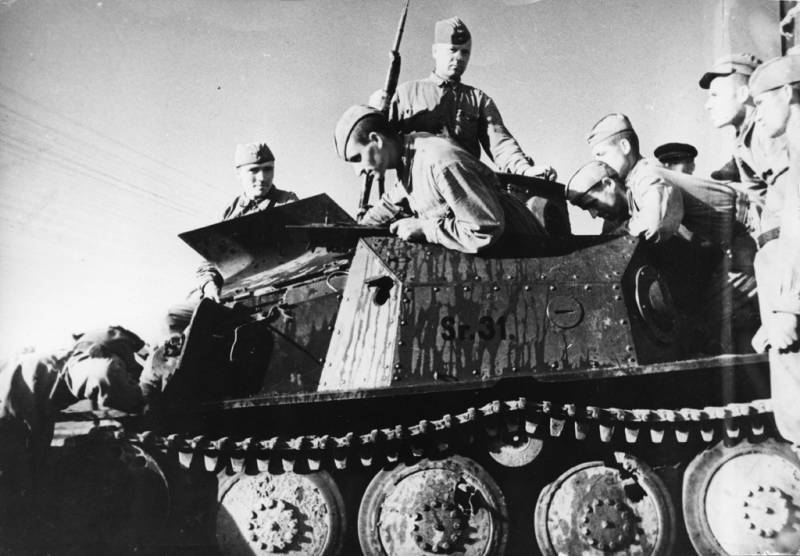
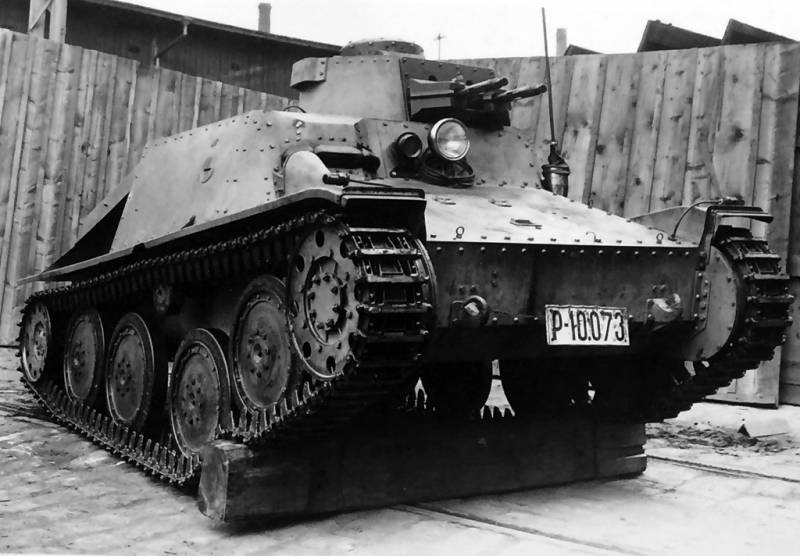
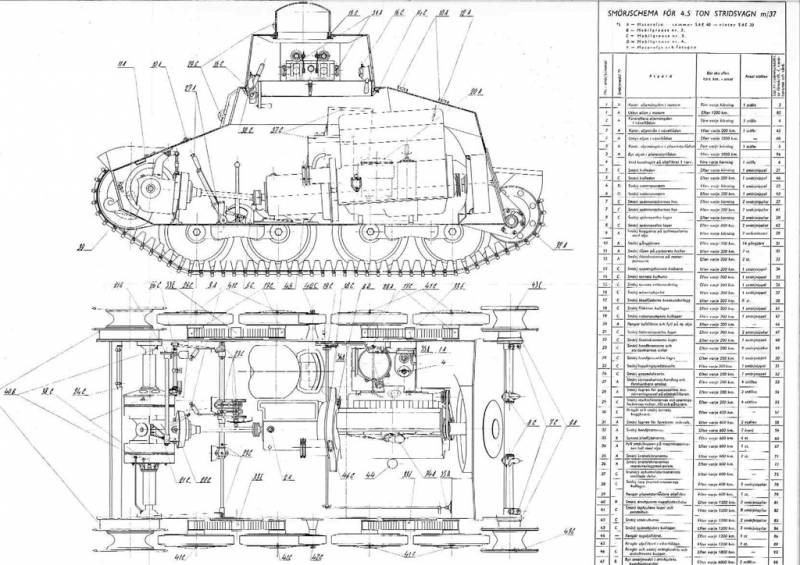
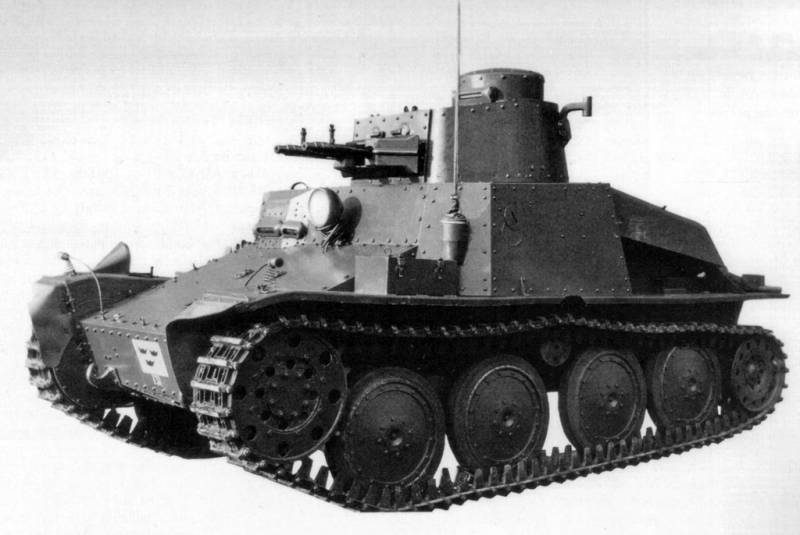
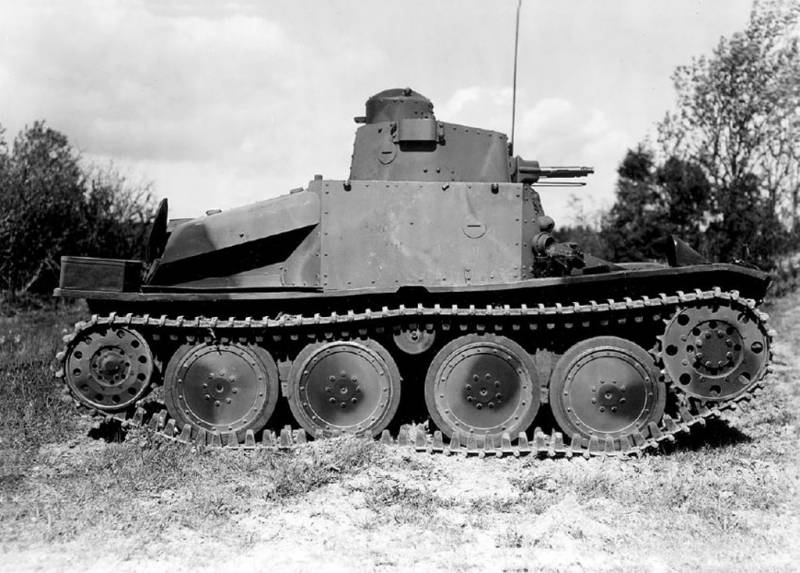
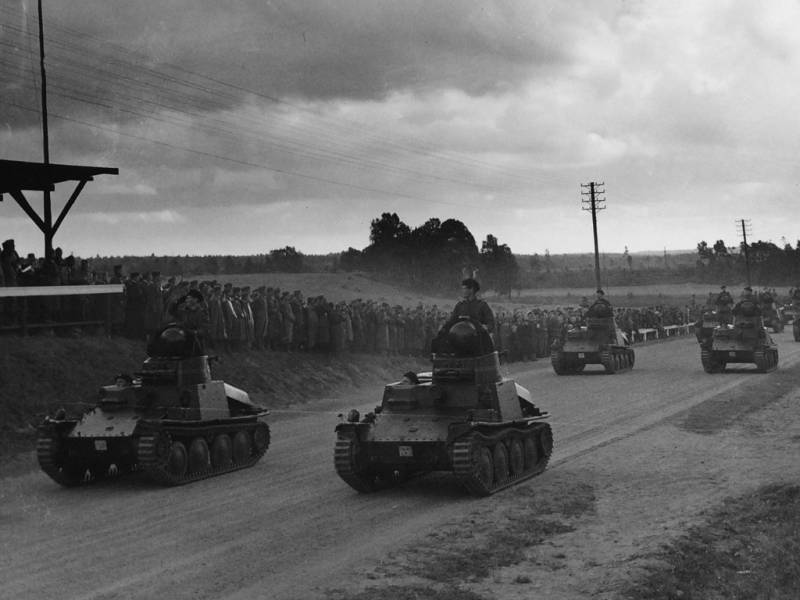
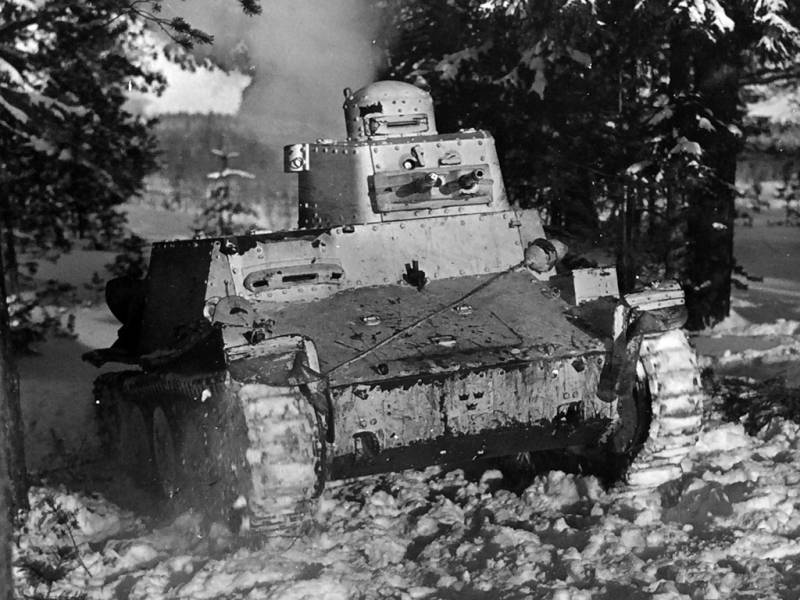
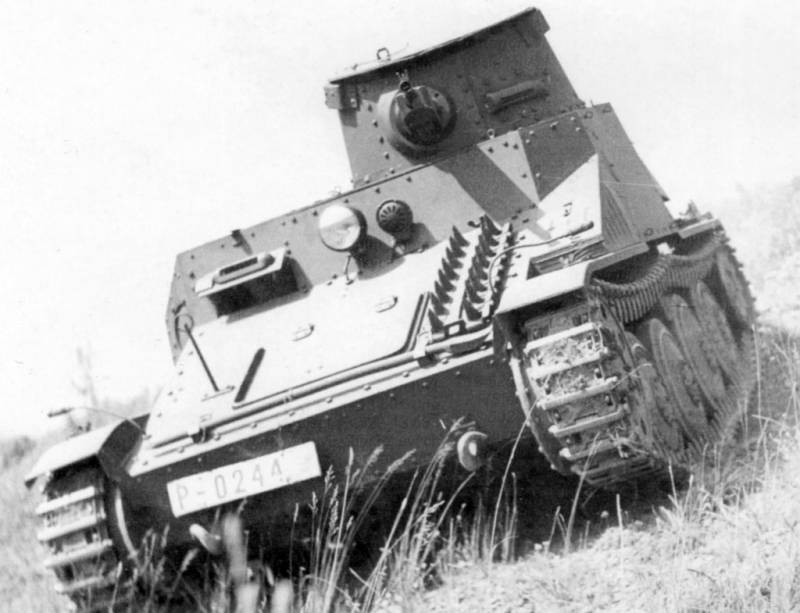
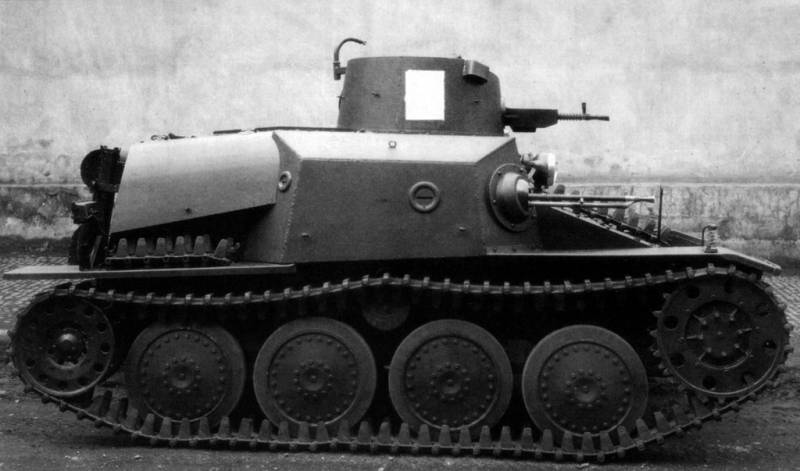
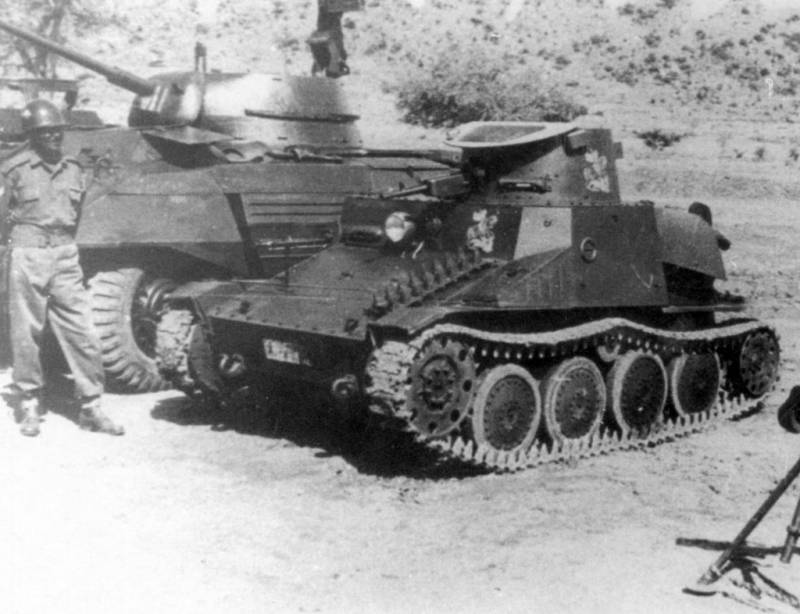
Information